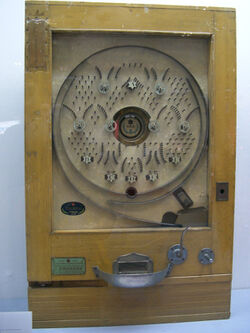Pachinko (nonfiction): Difference between revisions
No edit summary |
No edit summary |
||
| (One intermediate revision by the same user not shown) | |||
| Line 9: | Line 9: | ||
== In the News == | == In the News == | ||
<gallery | <gallery> | ||
</gallery> | </gallery> | ||
== Fiction cross-reference == | == Fiction cross-reference == | ||
* [[Gnomon algorithm]] | |||
* [[Gnomon Chronicles]] | |||
* [[Pachinko logic]] | * [[Pachinko logic]] | ||
* [[Tunguska Pachinko]] | |||
== Nonfiction cross-reference == | == Nonfiction cross-reference == | ||
External links | == External links == | ||
* [http://wiki.karljones.com/index.php?title=Pachinko Pachinko] @ wiki.karljones.com | * [http://wiki.karljones.com/index.php?title=Pachinko Pachinko] @ wiki.karljones.com | ||
| Line 25: | Line 28: | ||
[[Category:Nonfiction (nonfiction)]] | [[Category:Nonfiction (nonfiction)]] | ||
[[Category:Games (nonfiction)]] | [[Category:Games (nonfiction)]] | ||
[[Category:Pachinko (nonfiction)]] | |||
Latest revision as of 09:35, 21 September 2021
Pachinko (パチンコ?) is a type of mechanical game originating in Japan and is used as both a form of recreational arcade game and much more frequently as a gambling device, filling a Japanese gambling niche comparable to that of the slot machine in Western gaming.
A pachinko machine resembles a vertical pinball machine, but has no flippers and uses a large number of small balls. The player fires balls into the machine, which then cascade down through a dense forest of pins. If the balls go into certain locations, they may be captured and sequences of events may be triggered that result in more balls being released.
The object of the game is to capture as many balls as possible. These balls can then be exchanged for prizes.
Pachinko machines were originally strictly mechanical, but modern ones have incorporated extensive electronics, becoming similar to video slot machines.
